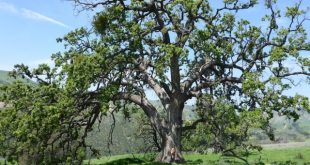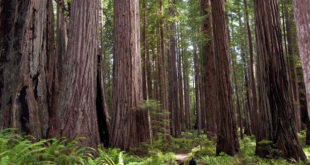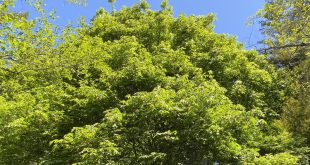Red Alder, Pacific Coast Alder, Oregon Alder, Western Alder (Alnus rubra)
Family BETULACEAE
The red alder is one of two species of alder common to the Gualala River watershed’s riparian corridors. [Photo: 1] It occurs in the western portion where it grows along the lower reaches of the river and its tributaries. Further east in the higher elevations, red alder is replaced by white alder (Alnus rhombifolia— see White Alder article). While red alders are not the grandest or most imposing trees, this slender, fast growing species plays an extremely vital role in the ecology of the watershed.
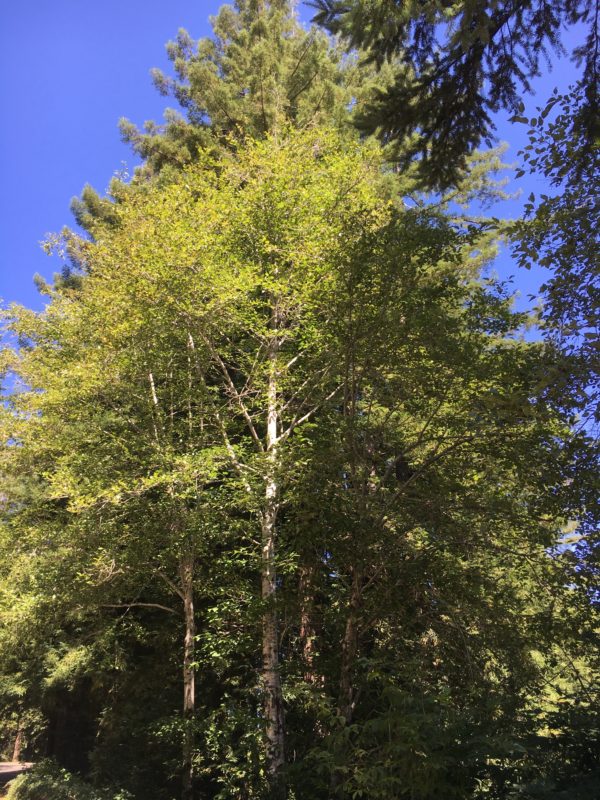
Description and Life Cycle
Early spring spells the beginning of the annual reproductive cycle of the alder. Last year’s leaves are gone, and the branches are bare except for leaf buds and the reproductive structures. [Photo: 2] Soon the leaf buds will be fully open, creating a dense yellow-green canopy along the river’s edge. The leaves have strongly serrated edges that sometimes curl under, and their veins are depressed. [Photos: 3, 4]
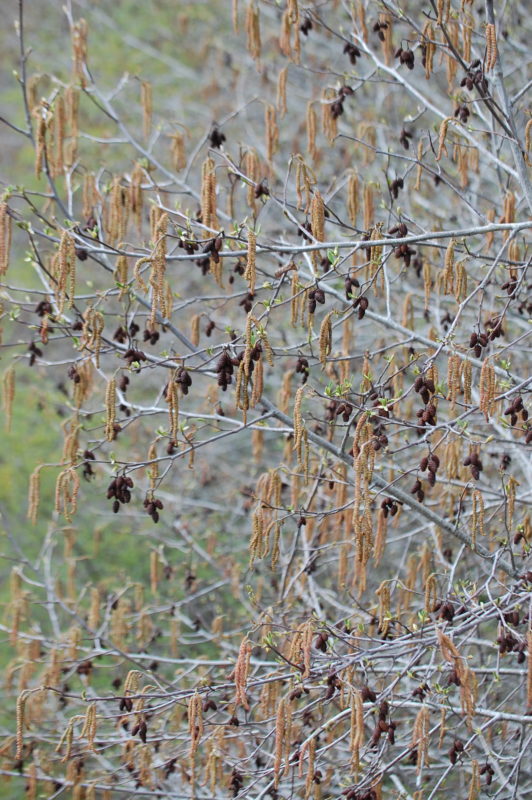
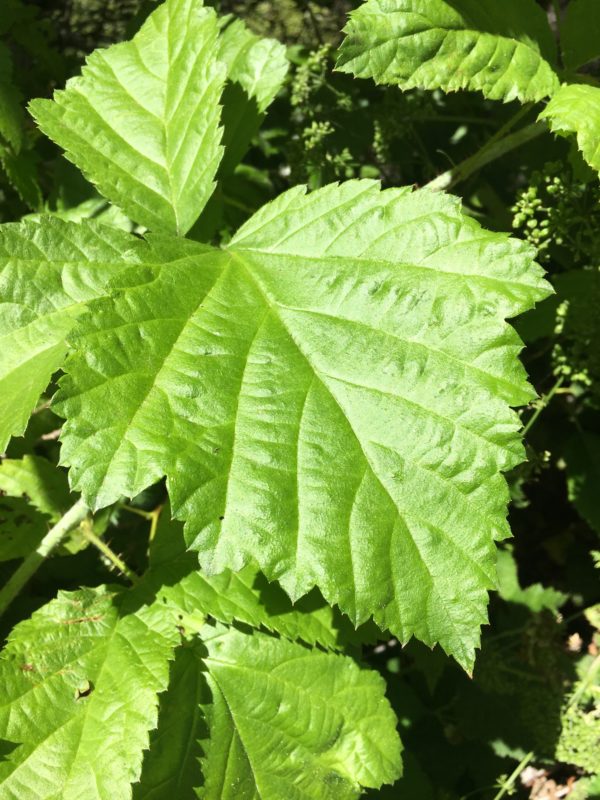

The outer bark of the trunk is a mottled grayish-white. This species is called red alder because the inner bark is red and when cut, the wood initially oozes a red fluid. [Photo: 5, 6]
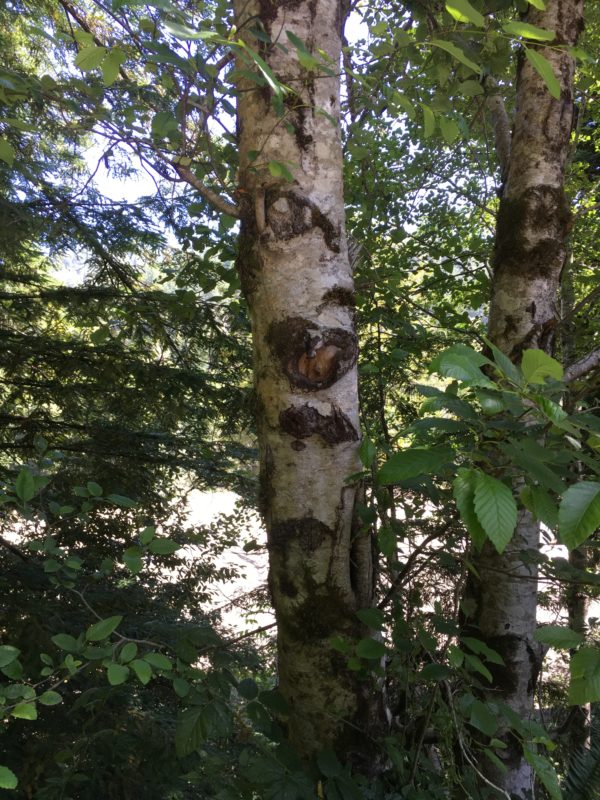
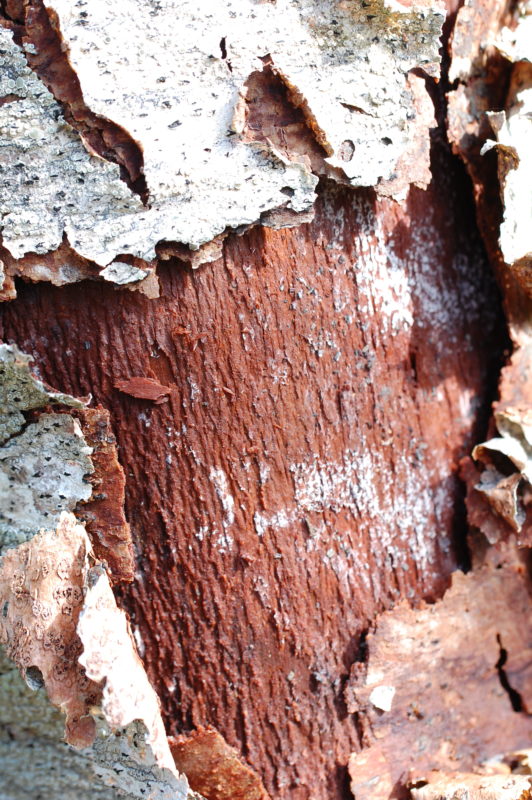
Reproduction
Red alders are monoecious—both male and female flowers occur on the same tree, and they are borne on structures called catkins. Development of the male catkin is less complex than that of the female. Male catkins are long, soft, and dangle from the bare branches. [Photo: 7]. After they release their pollen, their role is finished and they drop from the tree. [Photos: 8, 9]
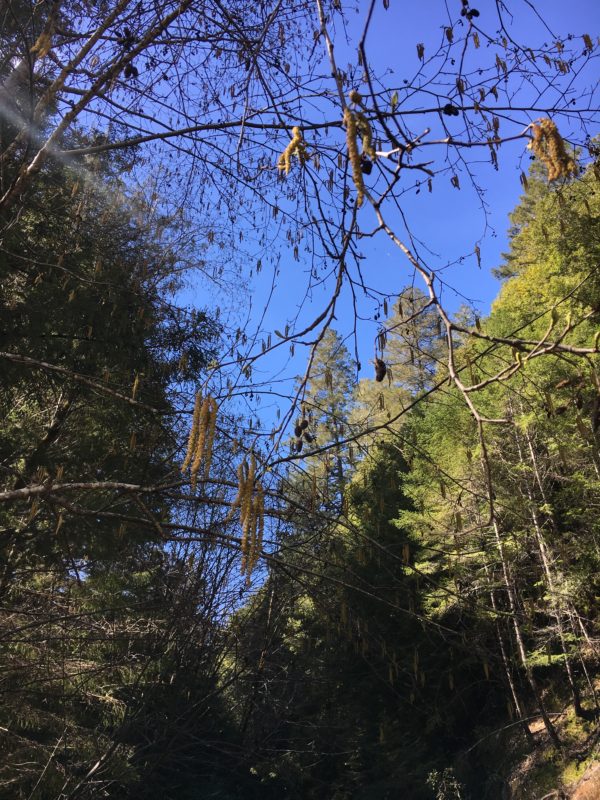
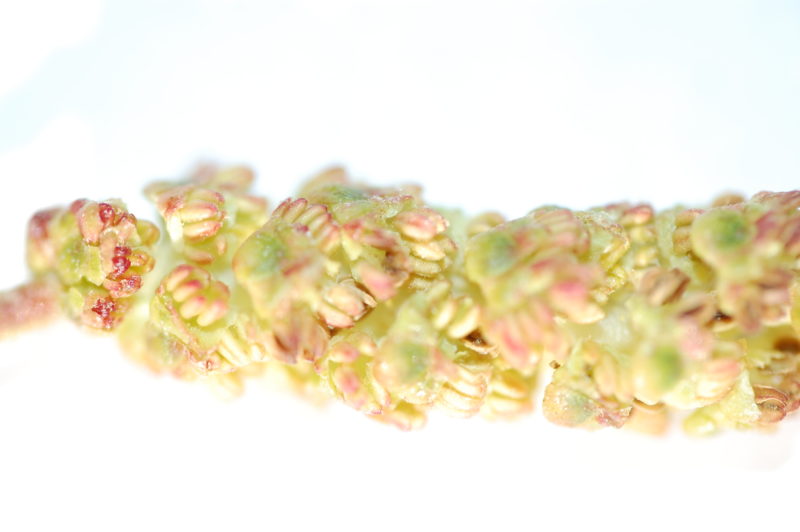
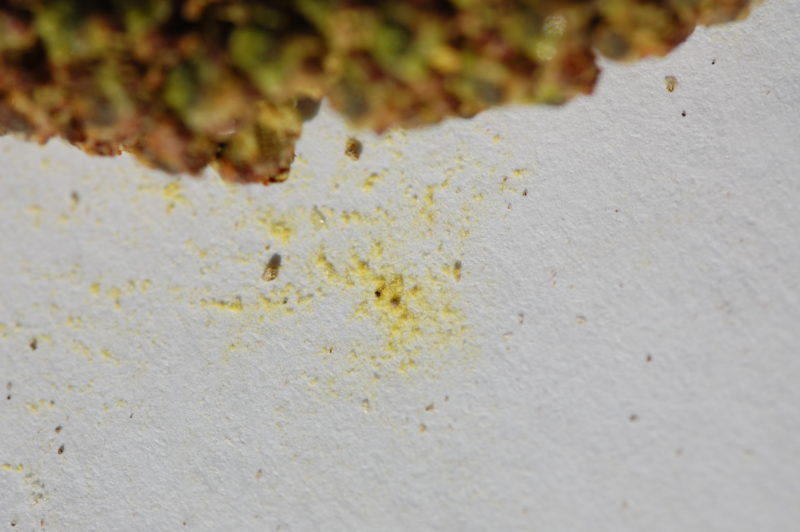
The smaller, inconspicuous female catkins are erect structures on the branches above the male catkins. [Photos: 10, 11]. Wind bears the pollen from the male to the female catkin fertilizing the female flowers there. [Photo: 12]
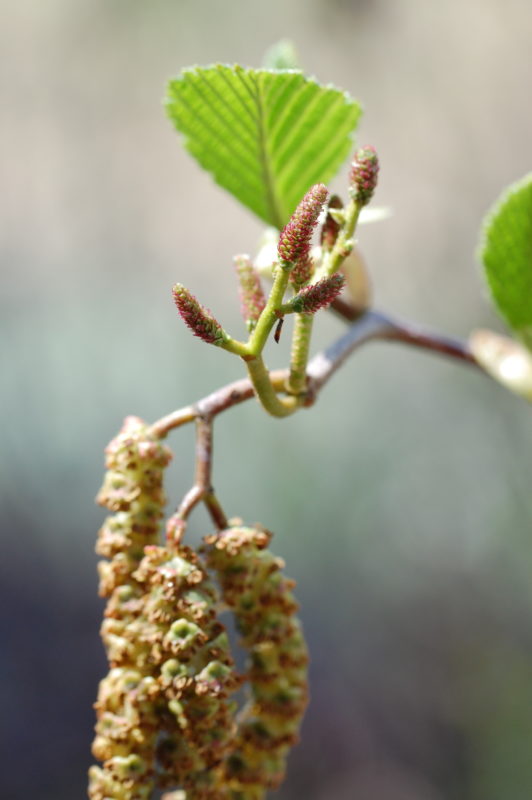
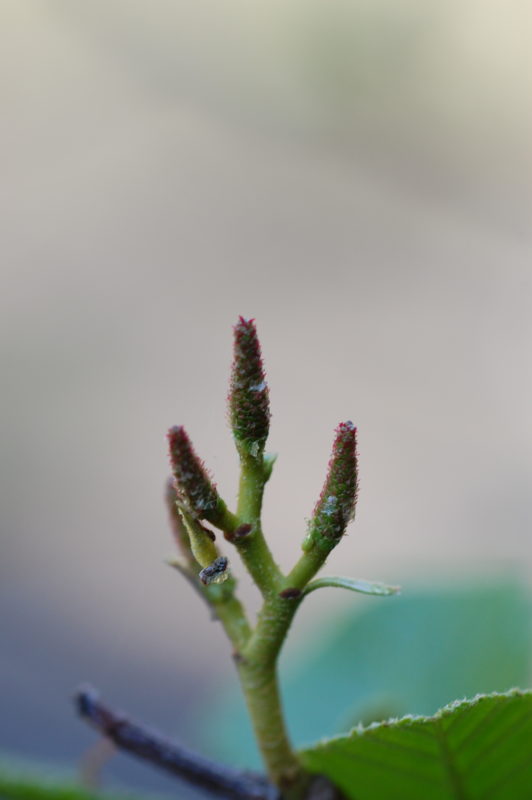
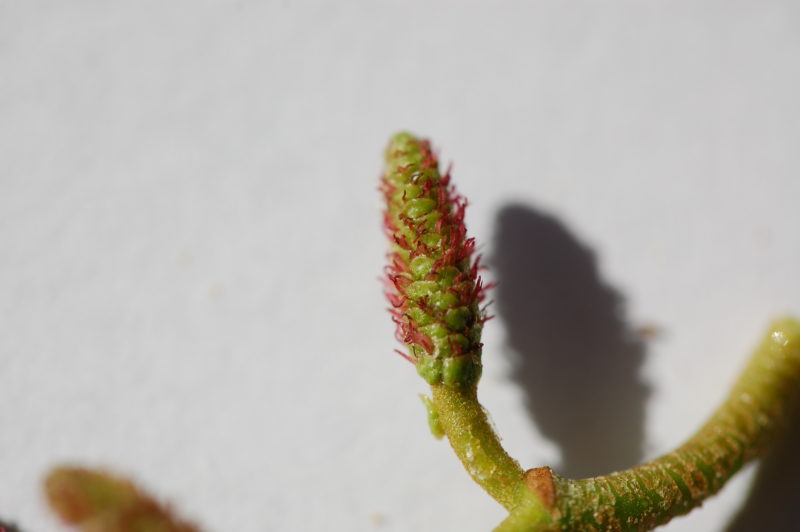
Over the spring and summer the female catkins develop into strobiles which are cone-like structures. [Photo: 13] By September the seeds are fully developed and the strobiles open and release huge quantities of the tiny papery seeds which are dispersed by the wind. [Photo: 14] Last year’s strobiles often remain on the tree as seen in Photo 2.


Alder seeds require bare ground and open, sunny conditions in which to germinate. These are conditions created by various types of disturbances including landslides, fire, and the turmoil of a river’s flood plain. In the Gualala River watershed, these conditions are present during the late summer and early fall drought when river waters recede from the sandy banks. Here red alder plays its starring role.
Ecological Role and Relationships
Challenges of the Flood Plain
Red alder is a pioneer species that helps physically anchor as well as fertilize the nutrient-poor sandy soils found in the dynamic, disturbed zone of the river’s floodplain. [Photo: 15] Cut and fill alluviation is a dynamic process in which the river channel constantly changes, eroding banks and carrying and depositing sediment downstream. Because of these forces, the floodplain is a zone which is hostile to the establishment of most plant species. [Photo: 16]
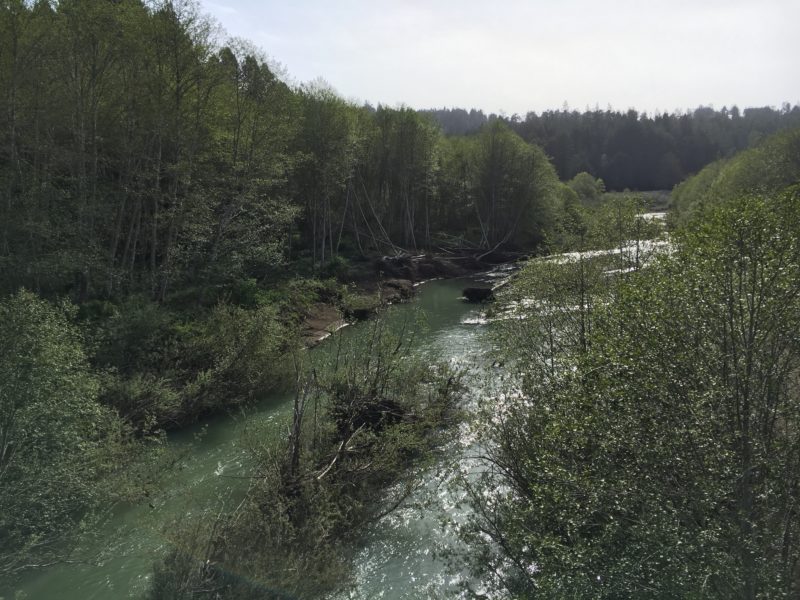

In addition to the physical stress of the sometimes violent currents of the river waters, trees are often standing in water during winter flood events or in saturated soil which is low in oxygen. [Photo: 17] One way that the alder responds to low oxygen is to develop adventitious roots which arise from higher up in the trunk than ordinary roots. [Photo: 18]

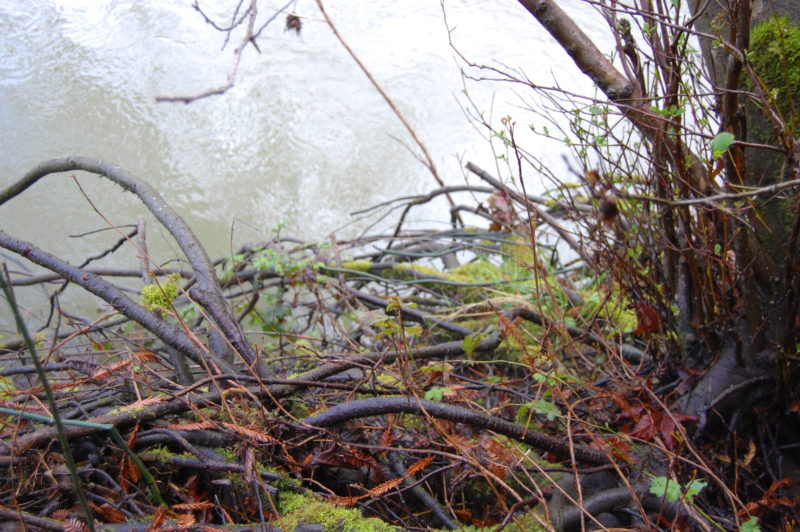
Disturbance zones such as flood plains require pioneering plants specially evolved to literally establish a beach head which in turn provides conditions for other vegetation to move in. Willows are nearly always a companion of alders in anchoring soils in the flood plain. [Photo: 19]
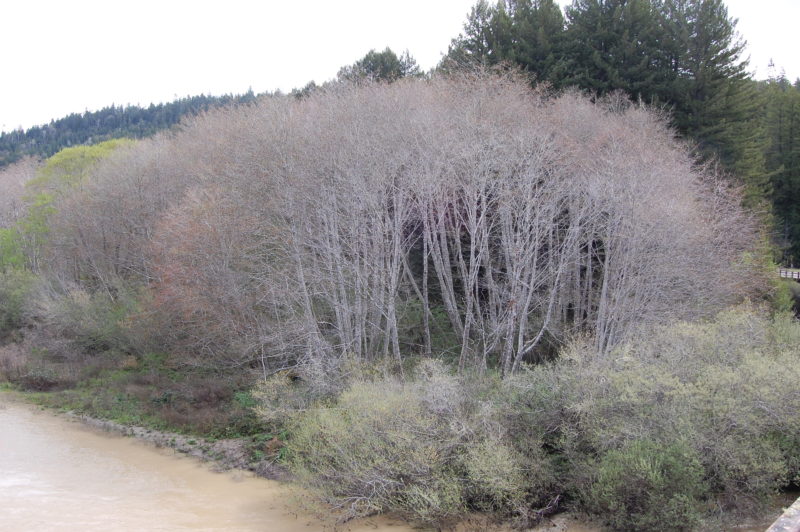
Alder and Frankia Partnership
In addition to anchoring the soil of river banks, alders provide large amounts of the macronutrient, nitrogen, to the riparian zone where it is frequently a limiting factor for vegetation. Nitrogen is an essential building block of proteins. Like many pioneer species of plants that colonize disturbed areas, alder is an actinorhizal plant, one that has evolved a symbiotic relationship with a nitrogen-fixing bacterium, in this case, Frankia alni. This microorganism enters the root hairs of the tree where it develops nodules in the tree’s root system. [Photo: 20] Then, in exchange for sugars produced by the alder’s photosynthesis, Frankia supplies the trees with a usable form of nitrogen. How does it do that?

The answer lies is one of the powerful but less visible miracles of evolution. The earth’s atmosphere is 78% nitrogen, but plants cannot make direct use of this vast source because atmospheric nitrogen occurs as two nitrogen atoms triple bonded to each other, and this bonding is very difficult to break. Of all earth’s life forms, only a few species of bacteria like Frankia have acquired the ability to split or “fix” the N2 molecule because they possess enzymes (nitrogenases) that can convert elemental nitrogen to ammonium. And, ammonium and its component amino acids are nitrogen compounds that plants can use.
Thus, the symbiotic relationship between Frankia and alder provides alders with a ready source of nitrogen, conferring a competitive advantage to alders over other potential competitors in the flood plain. In forest soils where there is more nitrogen available from decomposed plants and animals, alders would face stiff competition.
Frankia has another adaptation that enables it to function in these stressful conditions. Flooded soils are very low in oxygen. But, remarkably, Frankia possesses hemoglobin–the same oxygen-binding compound that we and other animals have in our red blood cells. The oxygen-rich hemoglobin provides the microenvironmental conditions necessary for the nitrogenase enzymes to function.
Of what significance to us is this powerful symbiosis between alders and Frankia? In nutrient-poor soils such as those found along the Gualala River and its tributaries, red alders can produce up to 280 pounds of nitrogen per acre per year, far more than is used by the alders themselves. Indeed of all actinorhizal species in North America, red alder is the highest producer of nitrogen. As the leaves, roots, branches, and trunks of the alder break down, the nutrients fertilize the flood plain, and this in turn makes succession possible for non-actinorhizal species such as coast redwood. [Photo: 21]
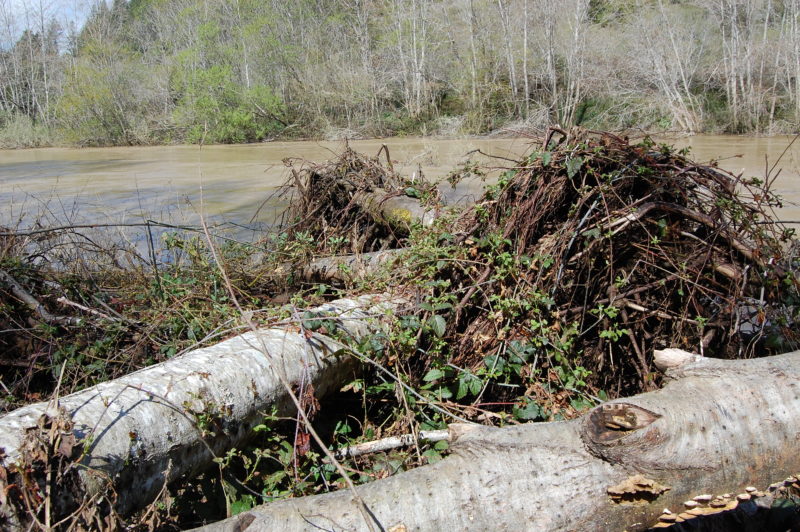
This role of nitrogen producer may have become even more important since the disastrous decline of salmonid populations in the river. Only recently within the past two decades has there been recognition that anadromous fish bring a rich source of marine-derived nitrogen from the oceans to the freshwaters of the river where, after they spawn, their decaying bodies distribute nitrogen along the flood plain. With the steep decline of the salmon populations, that nitrogen subsidy is now gone.
Other Ecological Relationships
Red alder is occasionally found in lowland forests along with tan oak, grand fir, bigleaf maple, and Douglas fir. It persists as long as it can grow next to open areas such as roads and wet meadows.
Along the flood plain, alder is closely associated with willows and sedges in open areas and bay trees and redwoods in cooler, frequently north facing sites. Plants frequently found in the understory and which often form a dense nearly impenetrable bramble are salmonberry, stinging nettle, hedge nettle, blackberry, Western coltsfoot, and Equisetum. [Photos: 22, 23, 24].

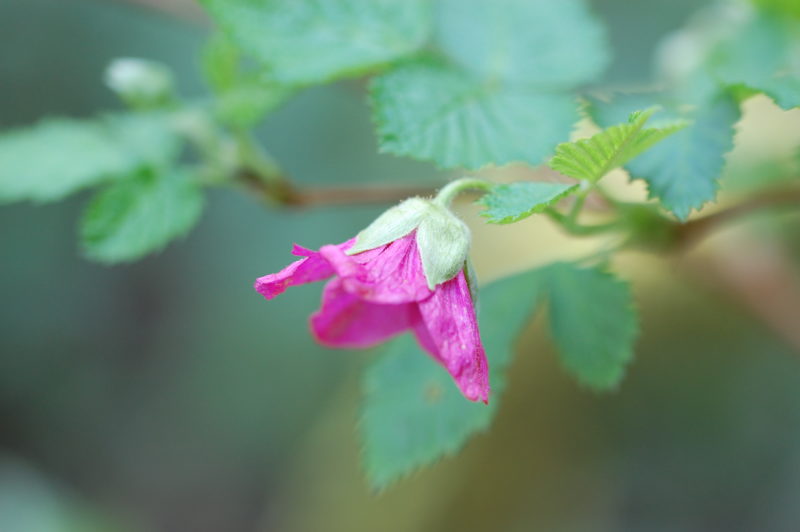

Alder is important to the gleaning guild of small birds such as warblers that feed on the insects, mites, and spiders inhabiting the tree’s leaves and stems. Crossbills and pine siskins feed on the seeds, and deer browse the twigs and use the alder groves for cover.
Alder leaves are commonly galled by a microscopic mite (Phytoptus laevis) that induces a bead gall. [ Photo: 25] In addition, a number of moth species and several butterfly species, including the Western Tiger Swallowtail and the Mourning Cloak use the alder as a larval host plant.
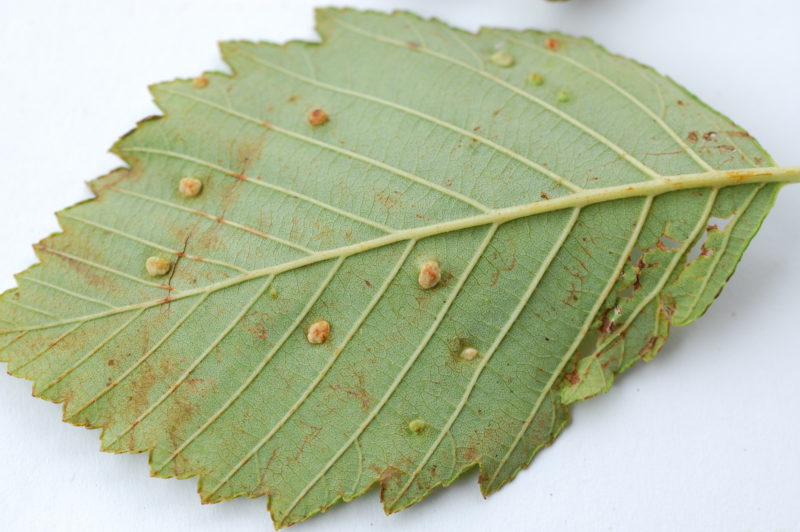
Many insects that use alders and stream side vegetation for all or part of their life cycles become important food sources for fish, especially salmonids. Insects that drop from overhanging trees [Photo: 26] rain down on the river below and are snapped up by fish resting in the shade of the bank. Indeed, fly fishermen choose their artificial flies based on the diverse insect fauna that makes use, in part, of the stream side vegetation, including alders.
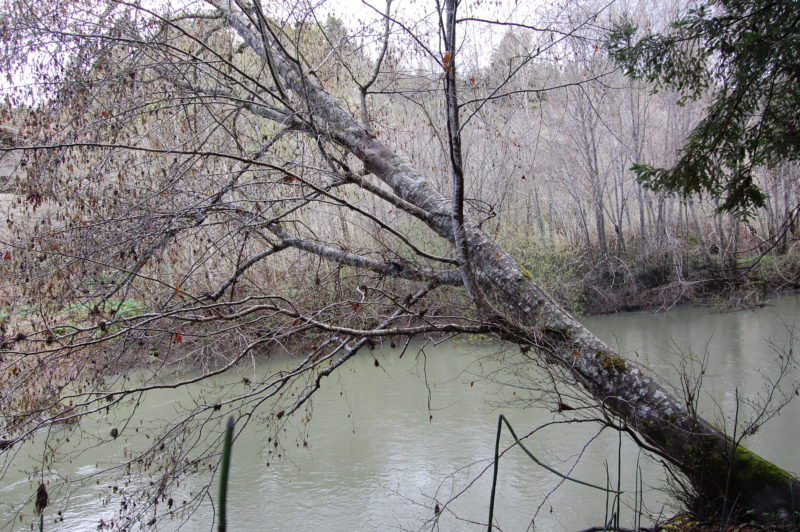
Epiphytic Life
Because alders grow along the riparian corridor where humidity levels are high, it’s not surprising that a rich epiphytic community of lichens, mosses, and liverworts develops on the bark of the trees, sometimes inches thick. [Photo: 27]
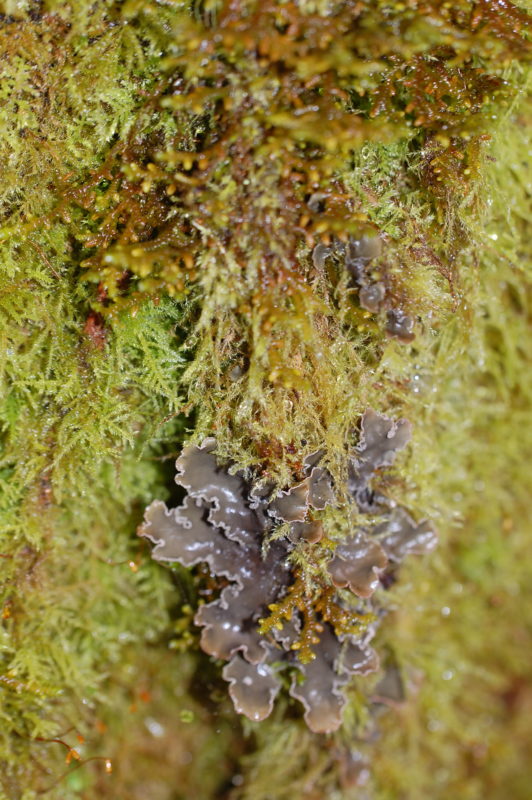
Larger leafy lichens can also be found. In the shadow of Twin Bridges where humidity remains high throughout the day, even the moisture-loving lungwort lichen, Lobaria pulmonata, manages to thrive. [Photo: 28]. A close examination of alder bark with a hand lens reveals various populations of crust lichens. [Photos: 29, 30]
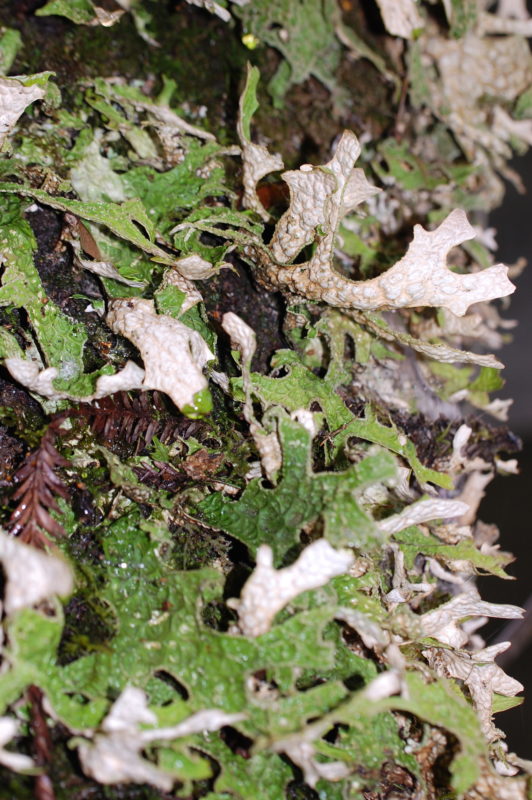
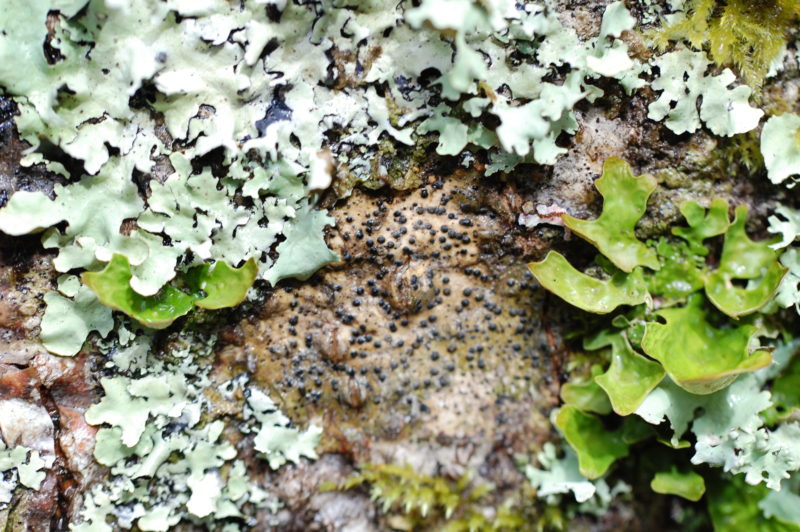
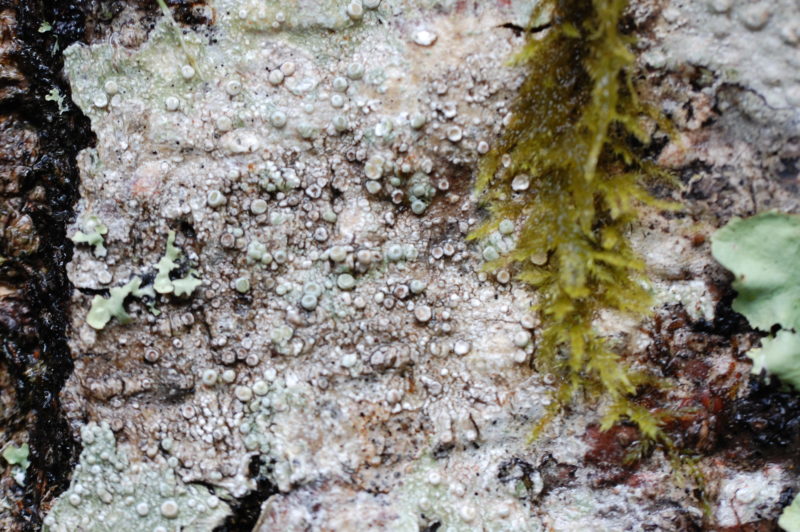
Forest Succession
Eventually, the alder’s success at sharing nitrogen with other tree species like coast redwood allows the latter to grow and eventually shade out the alder. Observe how different the light conditions are within the alder groves and under the redwoods. [Photos: 31,32] Sometimes these transition zones can be abrupt not only in terms of the change in tree species but also in their understories.
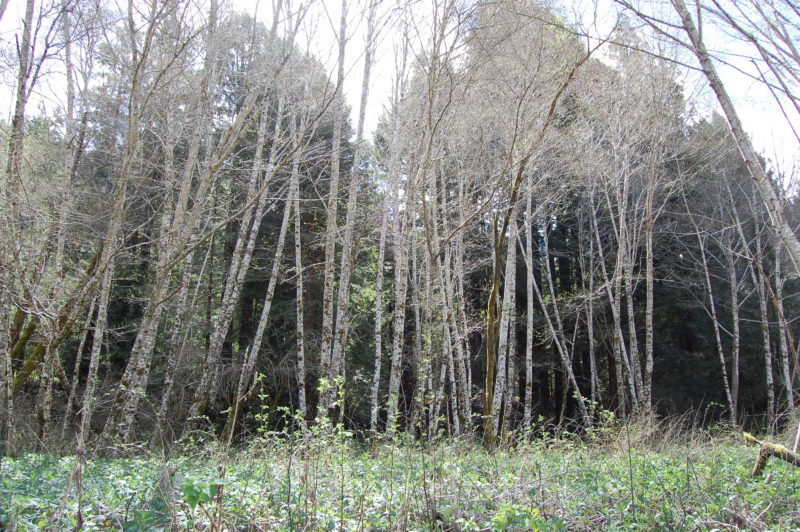
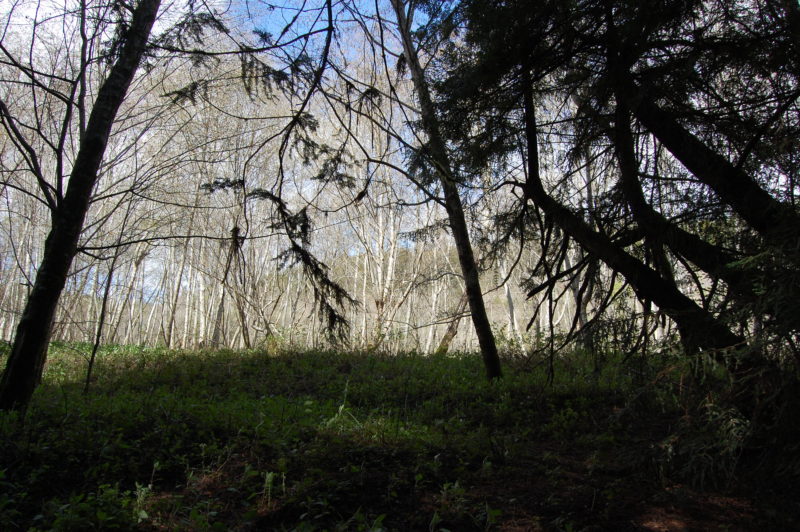
As coast redwoods grow up and overtop the alders, there is a clear demarcation line as the alders and their understory plants are replaced with redwoods and their deep duff of needles and an understory of sword ferns and redwood sorrel. [Photos: 33, 34, 35] The evergreen closed canopy of redwoods creates a deep shade which makes germination of the seeds of sun-loving alder trees impossible and the succession proceeds.
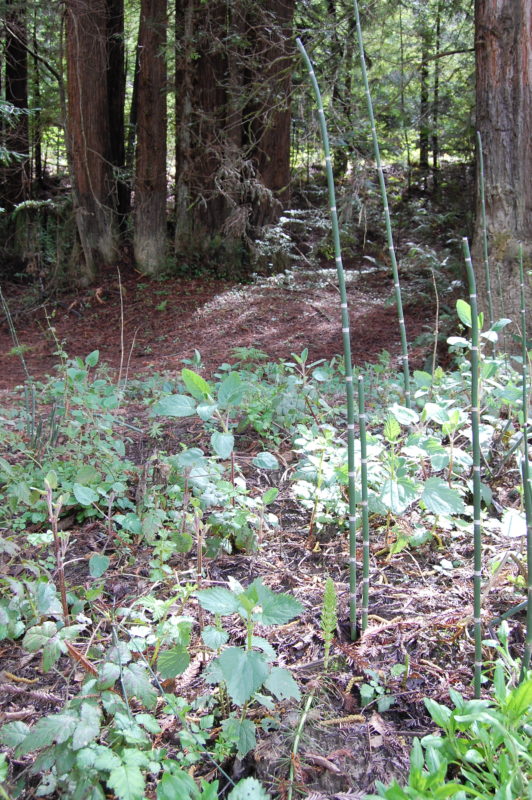
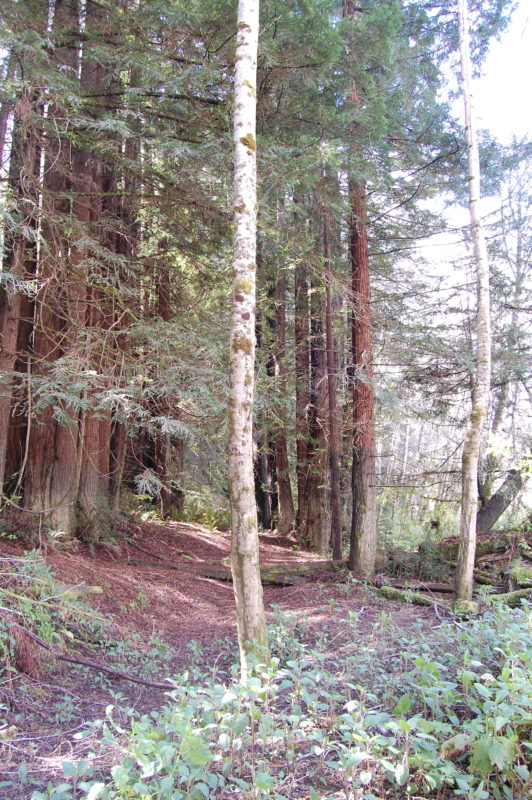
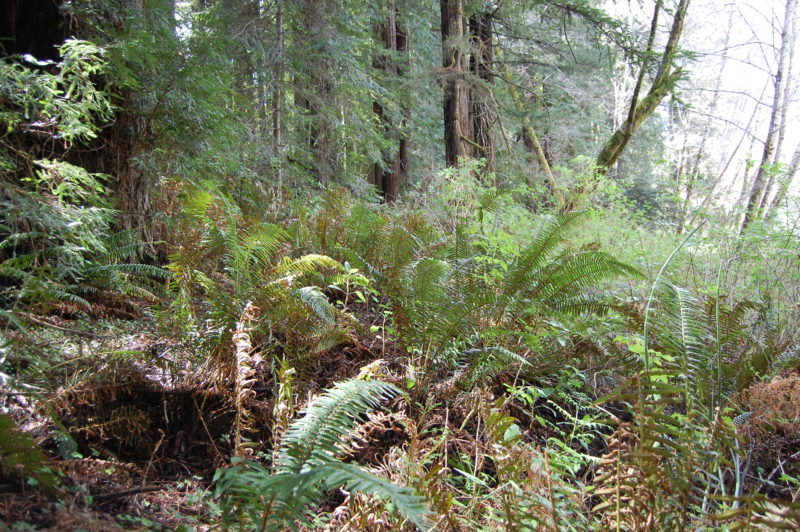
Along the Gualala River floodplain where old-growth redwoods have been clearcut, the normal succession over alders has been interrupted, and alders have benefited. Downstream at the Hot Spot along the main stem the second growth redwoods are beginning to overtop the alders which now occupy a very narrow band. The current plans to harvest redwoods in the floodplain, if implemented will reverse this successional phase and once again red alders will dominate the flood plain.
Practical Uses
Alder is a light-colored, straight-grained hardwood used in flooring, cabinetry, and furniture. Its oily smoke makes it useful for smoking fish. In Japan, live alders have been grown with conifers to improve soil and control erosion, and most recently there have been attempts in forestry in the western U.S. to pair cultivation of alder with Douglas fir to increase timber production.
Native Americans use the roots of alder for basketry, the bark for medicinal purposes, and the inner red bark for dyes.
Where to See Red Alders
Red alders can be seen from most places where roads cross the lower reaches of the river and along the creeks flowing into it. At the Highway One crossing over the estuary, look upstream. Salt water intrusion with the tides limits how close the alder can grow downstream toward the river mouth. Further east in the watershed, red alders are replaced by white alders. The Conservation Fund’s Integrated Resource Management Plan reports that red alders are found only along Buckeye Creek in the Buckeye Forest.
Selected Sources
Del Tredici, Peter. 1995 A Nitrogen Fixation: The story of the Frankia symbiosis.
Russo, Ron. 2007. Field Guide to Plant Galls of California and Other Western States.
Sharnoff, Stephen. 2014. A Field Guide to California Lichens.
USDA Natural Resources Conservation Service
 Friends of Gualala River Protecting the Gualala River watershed and the species living within it
Friends of Gualala River Protecting the Gualala River watershed and the species living within it
